Super Cool
Start » Activities » PROJECT WHO AM I? IDENTITY AND AUTONOMY PEDAGOGICAL PROJECT
Labels: who I am project, Pedagogical Projects
This project is not mine, I found it on the net, link and author's name are below.
Very good!
Students Served: Children in Pre-School Stage - Can be adapted to students of
Early Childhood Education – Periods: I and II.
Period: ( Month in which it will be worked ):___ ____________.
Duration: On average two weeks.
Goals:
At the end of the project, students should be able to:
•Know the story of your life;
•Know the history and meaning of your name;
• Develop attention for future identification of body parts and organs of the
senses;
•Stimulate reasoning and visual perception;
•Develop imagination and creativity;
• Know more words and expressions that were previously unknown (Increase and
vocabulary enrichment );
•Identify your preferences in relation to everything around you, your reality;
•Forming own concepts through discoveries and experiments.
Culmination: Construction of a collective Mural and an Album of life – Individual.

1-First Project Week:
• In "wheel" start a dynamic in a relaxed and attractive way - The Teacher presents a box, with a lid, decorated in the way he finds most attractive. their students and within their possibilities – It can be a shoebox, wooden, wicker, any other item that you have consumed, or even a small trunk.
•The teacher presents the box saying that inside it has the most
precious, most importantly, a true treasure.
• He then proposes a game where everyone will have to look at what's inside the box, see what this treasure is and keep it secret – One by one they must look and return to the place without being able to tell what they saw – This is the rule of the game: Keep secret.
•Inside the box must contain a mirror, at the very bottom, the exact size of the box.
The moment the child goes to look at the treasure, he will see his own image reflected.
•The teacher must be attentive to each individual reaction when faced with their own image. It is essential to create a climate of great interest, always provoking: What will this treasure be?
• After everyone has seen their image reflected inside the box and had the most different reactions, always taking care not to speak while everyone is not looking, then open the debate, the conversation informal.
•What did you see inside the box? Did you discover the treasure?
• Take advantage of each student's response, guiding them when necessary, but
enabling them to express themselves.
•The conversation should flow to the point where the teacher realizes that students have realized they are the treasure – each one of them – that's why they couldn't tell the secret – because we are all unique – No one is equal to anyone else.
After performing the Treasure Dynamics, still in a circle, sitting comfortably, provoke the students to observe their own bodies and make comparisons: __ Who is taller? Who is shorter? Who is the same height? __Who has blond hair? Who has brown hair? Who has black hair? __ Who is black? Who is brown? Who is white?
__ Who has blue eyes? And brown? __ Who is a boy? Who is a girl?
And so propose that they group in different ways:
Example: __Let's gather all the children who have very short hair on the left side while standing and all the children who have long hair on the right side sitting. __Vamos join the boys on one side and the girls on the other.
__ Now only children who have blue or green eyes will skip.
Thus, the teacher can play around, creating different situations according to his class, always having as aim that they make comparisons based on the differences and similarities existing in their own bodies and in the bodies of friends.
Complete the activity when there is no longer any interest from the class.
In a second moment, which can be on the same day or not, the teacher will present a form, previously prepared, photocopied or mimeographed where the children will have to complete by doing their self Portrait. The information contained in the form can be written down by the teacher if the class is not yet literate, however, it is essential that all are discussed individually and in groups.
Below is an example of a form that can be adapted if the teacher finds it necessary.
2-Who am I?
My name is: ________________________________________
I am ____ years old. I was born on ___/___/___.
My address is:
__________________________________________________
__________________________________________________
My phone is: ______________.
The name of my mother is: ________________________________
My father's name is: __________________________________
In my family there is also: __________________ that I
I like it a lot and take care of me.
My height: __________.
My weight: ____________.
Eye color: _________________.
Hair color: ________________.
My self portrait:
3-Draw on the cake the number of candles corresponding to your age: 4
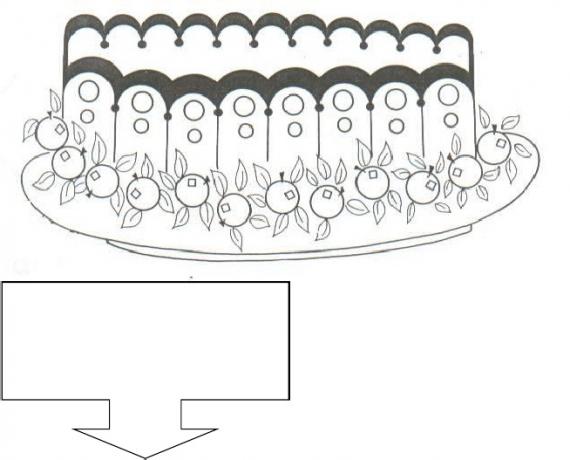
Here are some more suggestions for activities
systematized, in order to be xerocas or
mimeographed by the teacher with the intention of going
putting together material for the Student's Life Album:
Paint the figures the correct color:
My eyes:
My hair:
Write your name as you know it:
How many letters is in your name? Count and glue a paper ball
crepe of your favorite color for each letter :
5-Important:
Arriving at this stage, the teacher will have to start a work creating an identity between the child and the writing of his/her name. Here are some suggestions for practical activities that can be carried out during this project or even throughout the entire school year. We suggest that for the project itself: Who am I? A maximum of 3 of the proposed activities are chosen: History of the name, Chair Dance and one more choice by the teacher according to the level of the class. But, there are suggestions for further work.
The construction of the name writing, in Early Childhood Education, is seen as a great
path to be taken by the child.
A child's proper name is their identification mark and, for this reason, it is so valued by them. It is for this reason that working with the proper name generates a relationship between the child's identity and writing.
It is essential, for the construction of the writing of the name, that the child knows that drawing is different from writing, based on this differentiation, the child begins to realize that he needs something more than a drawing to be able to write his name, and then attempts at writing begin to appear in his works, which may be represented by "scratches", "balls", "snakes"...
The first letter of the first name is always the most recognized and written by children before others. Many even establish a relationship of identity that, in general, makes them call it my handwriting. It is always the one that they recognize faster in different texts, posters, billboards and others.
Visualization is a mechanism that is part of writing construction. For this reason it is important that the names are fixed on the railings, materials, lunch boxes, badges.
By identifying their name and observing it written in different places and materials, the child consequently memorizes it. From then on, her relationship with writing as a representation of her identity begins, helping her to see herself as an individual who has identification. That's why your name is so important. It is an identifying mark.
The model of writing the name on different materials tells the child what the letters are and what the number of letters needed to write it, in addition to informing the position and order in which they appear in your Name.
It is important, in this work, to search for similarities and differences, the positions
of letters, the different modes of writing.
It is interesting to challenge the child on this issue. For example: “I entered the first letter of Camila's name. Where do I put the second one? Here or here”? (indicating to the right or left of the letter C). This type of challenge helps the child in the direction of writing, leaving aside the mirrored letters that are so common in early grades.
The subject is a builder of his knowledge and in this process he goes through important steps ranging from visualization to recognition of writing in different places and forms.
The main objective of working with the writing of the name in Kindergarten is to make the child feel recognize as an important subject who has a name that is unique to you, in addition to providing the learning of writing.
Below I will present some activities and games that help the process of
construction of the writing of the name:
6-Suggestions for Practical Activities:
1 – History of the name.
Objective: Know the origin of your name.
Material: Sheets of craft paper.
Procedure:
•Propose children to make an interview with their parents, trying to find out
what the origin of their names.
• Assemble a form with students to assist them in the interview, including such questions
like: – Who chose my name? – Why am I called…??? What it means
…???
•Agree with the class the day of the report and how it will be. (Teacher's choice)
Activity Suggestion: Tell the story of your name learned from the interview and
illustrate it.
Interesting: On brown paper the teacher can record everyone's name and a synthesis
the origin of the same and fix it on the mural.
Notes: Everyone must bring the interview on the appointed day, providing opportunities for the development of responsibility since small, and, if this does not happen, the teacher must be prepared and know what attitude to take towards this problem.
2 – Binder:
Objective: Know the spelling of your name with different graphic forms.
Material Required: Chips of the same size and shape and a shoe box.
Procedures: Assemble a binder in the classroom with cards that show different forms of writing the first name: In capital letters, small letters, cursive letters. Making it clear to the child that there are different ways to write their name, but they all mean the same thing.
Arrange with the class when and how they should use the cards. ( Accordingly
with the teacher) – You can have a 3×4 photo of the child on each card.
Suggested Activities: Identify the name – Write the name.
3 – List of Words:
Objective: Identify the initial letter of your name in different words. Materials: Scissors, Magazines, Newspapers, Leaflets, Glue, Craft Sheets.
Procedures:
7
• Explore the initial letter of the name with the class.
•List other words that also start with that letter.
• Propose that they search newspapers, magazines and brochures for other words that also
start with the letter of your name.
•Cut and paste words on letter sheets.
•Read the words found with the class and together look for the meaning.
Assessment Suggestion: Recognize, in a list of words, those with the letter that starts the
your name.
Observations: The teacher can propose to the class that each day one brings a word from home that starts with the letter of their name and in class they find the meaning. This type of activity awakens in the student a greater interest in research and increasing vocabulary.
4 – Mobile Letters:
Objective: Know the letters and write your name through play. Material: Movable letters that can be made of wood, EVA, cardboard, etc...
Procedures:
• Leave the letters exposed in the room so there is greater contact by the children
with the material.
• Propose that, at different times in class, children use the letters for the
attempt to write their names.
Evaluation Suggestion: Write your name in a joke.
Comments:
•This material allows the child to match letters, position and
ordering them.
•If the letters are made of paper or cardboard, it would be interesting for the children to help
in the preparation of the material itself, guided by the teacher.
5 – Bingo:
Objective: Know the letters that make up the writing of your name through the game.
Materials: Cardboard or cardboard cards; bottle caps or pebbles for marking letters; drawing sheets; cards with the letters of the names; Glue; colored paper (to make paper balls) or used matchsticks.
Procedure:
•Each child will receive a card with their name written on it.
•The teacher will draw the letters, saying the name of each one so that the children can identify them. Each drawn letter must be marked on the card if it is in your name. Once the card is filled, the student must shout: BINGO!
8
• As soon as they finish the game, a report will be presented individually, with the distribution of cards with the letters of the name (One card for each letter) delivered out of order.
•Children should sort the sheets, composing their names, and place them in a
craft sheet.
•The teacher asks you to count how many letters there are in the writing of your name and proposes that you stick the representative amount on matchsticks or paper balls on the sheet.
Assessment Suggestion: Recognize the letters that are part of the writing of the
your name.
Note: It is interesting to repeat the game several times during the activities
before proposing the report.
6 – Chair Dance:
Objective: Recognize the writing of your name among the writing of the names of all
colleagues.
Materials: Cards with the writing of all names (one for each name) and chairs.
Procedures:
•The teacher asks the children to make a circle with the chairs.
•Then distribute the cards with the names so that the children can put them on the chairs.
• The chair dance begins where at the end of the song each person must sit on the
chair where the form with your name appears.
Evaluation Suggestion: Play the game several times, always changing the
place chairs.
7–Race of the Balloons:
Purpose: Write your name.
Materials: Numbered balloons, tokens numbered according to the balloons and with names
and chalk.
Procedures:
•Form children in two rows.
•Distribute a card with a number to each child.
• Given the signal, one at a time runs to the balloons and pops the one that has its
number. Inside will be a card written your name.
•The child should read their name aloud and reproduce it on the floor using chalk.
8 – Dice Game:
Goals:
• Be part of the group, knowing how to wait for your turn to play.
•Recognize the letters of your name.
•Order the letters that make up your name.
Materials:
• Boards with squares needed for writing the name in white.
•Data with the letters of the names of the components of the group.
• Cards with the letters.
Procedures:
•Distribute students into small groups.
•Agree with the groups that only one child at a time will throw a dice, identifying which letter was drawn. If this is part of your name, you must take the corresponding token and place it on the board.
Rating Suggestions: Carefully participate in the game and identify the letters of your
Name.
9 – Shoe or Hopscotch:
Objective: Recognize the letters that make up your name.
Materials: Pebbles and chalk.
Procedures:
•Each student will draw his hopscotch in the school yard. At this point, one hopscotch will be different from the other, when the names do not have the same number of letters.
•Using the pebble will mark the letter that should not jump.
•The teacher can take the opportunity to question the student: What is the next letter?
first? And then which one will it be?
Evaluation Suggestion: Write your name after jumping the hopscotch.
Note: This type of game works the order in which the name is written, allowing the student to identify which is the first letter, which is the second, and so on until forming his name.
Idea:
With the work of the History of each student's name, it is interesting that they are
the different meanings of the names of each one are researched and a
mural with them: illustrations made by the children, the way they know
write your name, your name drawing, your self-portrait, pictures of the children –
This is up to the teacher's interest and creativity. It's a rich topic,
important and that will certainly delight those responsible and the entire school team.
exposed in a beautiful mural.
Take advantage of this idea and give the mural assembly an originality, showing your
personality and that of your class.
You can and should take a day off just for this task.
The participation of children in every detail is essential.
Second Project Week:
Preferences:
•Through informal conversation, the teacher should ask each student to talk a little about their daily life. It is important to let the children express themselves freely, recounting cases experienced at home, on outings, with the family etc.
• In a second moment, offer a blank sheet, different magazines, different illustrations, and propose that they make a cutting and collage montage of everything they find that looks like their day-to-day, with their life, their reality.
• Carried out the work, the teacher joins them to also add to the Album of Life – putting in writing, in addition to the child's name, what was the proposal for the cutting and collage montage.
• On another day, then, explore each student's preferences: Favorite play, favorite toy, favorite food, favorite place to be, favorite animal, favorite TV show, favorite artist, favorite song, favorite children's story character, favorite movie, favorite friend, favorite sport, favorite color etc.
•It is interesting to record in a systematized way to also be included in the Album of Life – attached is a systematization model that can be photocopied or mimeographed.
• Setting up a panel with preferences is a really cool idea and one that will certainly please everyone. Use your imagination and taking advantage of the idea and the materials you have at your disposal, create a beautiful mural with the theme: The things I like the most or The things that we in the class like the most or Ours Preferences.
• In the Life Album can be added: photos of children at different times: in the bath, playing, at school, sleeping, eating… How, also, an artistic technique of painting, colored glue or another can be used for the cover, which must be made of more resistant paper - cardboard in the case – with the title: Álbum da vida – there all systematized works will be coupled and must be bound or secured with dancers, staples, etc.
Legal joke:
Since we are working, the individuality of each one can be realized to
joke: Who is it? Where the teacher gives tips on physical characteristics,
of a student's personalities, character, habits, belongings and everyone will have to
find out who it is.
Such a game can be repeated as many times as the teacher thinks it prudent and
according to the interest of the class.
It should be established what to “reward” for whoever gets it right. It's fun guaranteed!
Conclusion:
Students must realize and understand that each person is unique, different
of others.
People may have some things in common, like skin color, preference for a type of music, an opinion, but they are different from others in other aspects. Nobody is exactly like anybody else!
Make students reflect on some people who do not accept differences: skin color, religion, other tastes… Until they conclude that this is not cool.
The objective is for the students to realize, too, that as each person is different from the others, they have their way of thinking, of acting, the facts that are important to someone may not be for someone else. Each one has its Album of Life, its history.
Take advantage of the Life Album to work on notions of anteriority and posteriority, making them realize that your album is a way of recording her life, a source from which to obtain information about her when she is older. old.
Suggestions for working with songs in the project:
• We suggest that they be heard, sung and danced
by the class the favorite songs of each one.
• We also suggest the game: Canoa Virou.
• If there is any student name in the class that exists
a known song, this can also be heard
– not forgetting to raise the question: When two or more people have the same names, the same names, how do we identify them? Example: Was this song written for Luciana who is part of our class or for another girl named Luciana?
• On one of the CDs that accompanies the project we have the song: Pula Corda – interpreted by the singer and children's presenter Eliana where a work of analysis of the lyrics: a child's preference for jumping rope can create a happy environment and provide moments of pleasure within the theme project generator.
The following is an example from Album of Life – Where children will express their preferences



Author: Patricia Fonte
Did you like it? Share this post on your social network
 MESSAGE: CHRISTIAN TEACHER DAY
MESSAGE: CHRISTIAN TEACHER DAY
 What the coordinator needs to look at on the walls of a classroom
What the coordinator needs to look at on the walls of a classroom
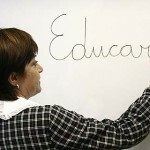 Parents: Educating is not an Art
Parents: Educating is not an Art
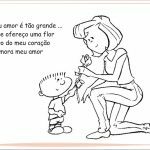 MESSAGES FOR MOTHER'S DAY
MESSAGES FOR MOTHER'S DAY
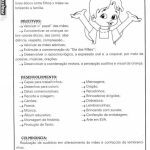 Mother's Day Project Redeeming Values
Mother's Day Project Redeeming Values
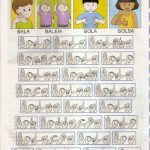 ACTIVITIES IN POUNDS
ACTIVITIES IN POUNDS
Super Cool
I would like to receive news from this blog, which is to be congratulated very good>
Very good your project. Congratulations!
I LOVED THE PROJECT!!!
Our! I loved! very good. Congratulations! I'm riding too and this helped me a lot. Congratulations indeed.
very good content and helped me to teach my child. I hope to receive more. a hug concept.
This site uses Akismet to reduce spam. Learn how your comment data is processed.


